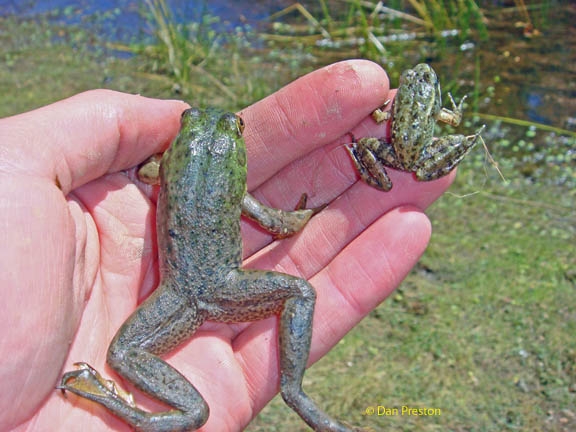The Northern Red-legged Frog (Rana aurora aurora) used to be the dominant frog species in many North Coast wetland habitats. The same held true at UC-HREC where this species was collected during the 1950s from the permanent water-bodied "sag ponds" located in what we refer to as "Lake Biological Area Pasture". Females reach up to 4 inches in length, with the males being a bit smaller. However, the introduction and rapid expansion of the Bullfrog (Rana catesbeiana) throughout the west, along with the introduction of warm water fishes such as bass and bluegill, contributed to the extirpation of many of the native red-legged frog populations.
Here you see a bullfrog (left) and a red-legged frog (right), each soon after metamorphosis from the tadpole stage (photo is not from HREC), showing the dramatic size difference. The much larger bullfrogs eat almost anything they can wrap their sticky tongues around, including red-legged frogs.
Researchers at HREC have proposed plans and research projects to rid the "sag ponds" of the introduced fish, reduce the bullfrog population, and re-introduce the Northern Red-legged Frog, but thus far have been unsuccessful in obtaining the funding to do so.
